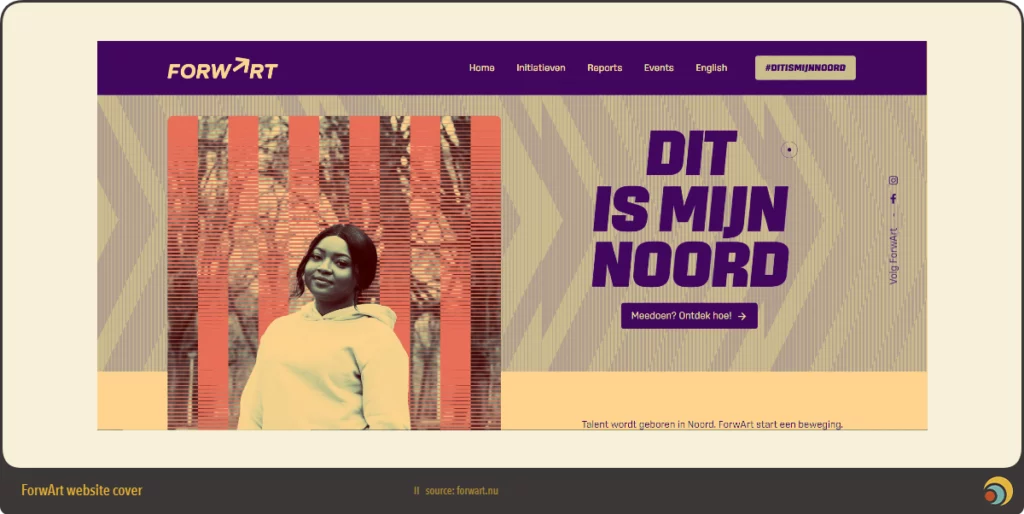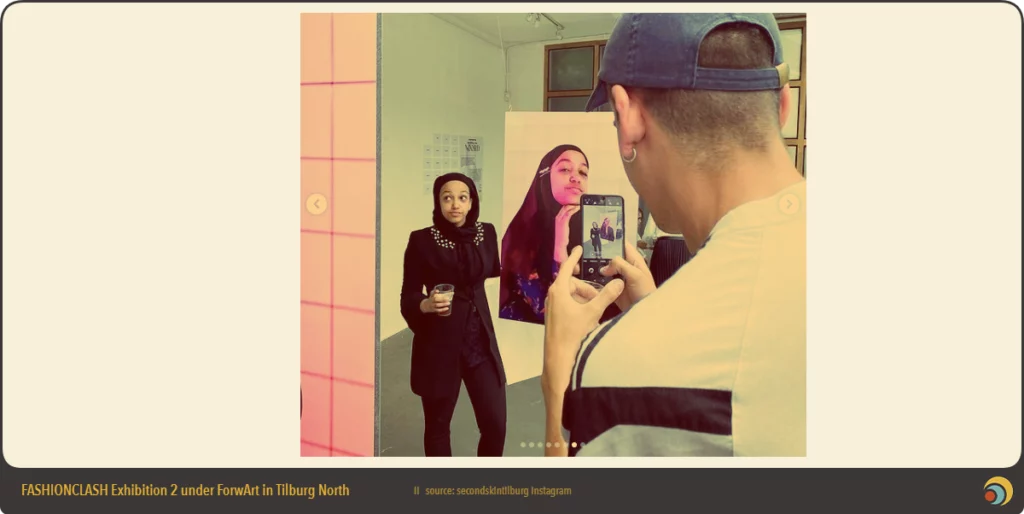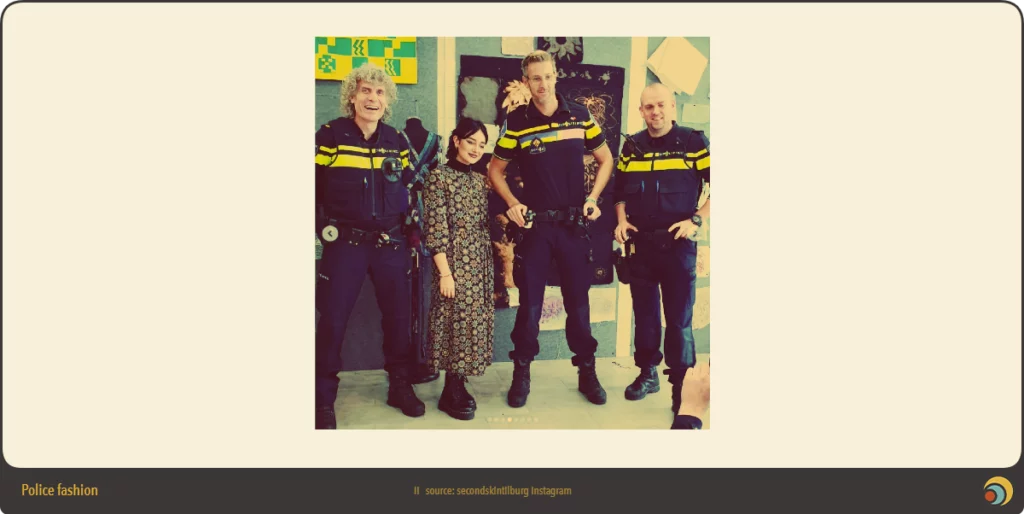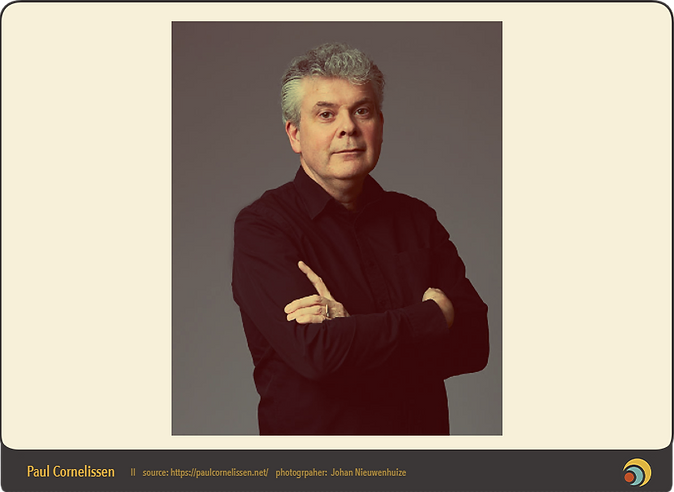The above sentence is the slogan of the ForwArt project of Tilburg city, which ambitions to make art as the source of empowerment and development. Indeed, this Urban Innovative Action project offers young people growing up in the area of Tilburg Nord a better future by unfolding their talents, by widening their opportunities, and supporting them in developing their own identity and their own ways to express their inner feelings and needs in a positive way. Words of Paul Cornelissen, project leader of ForwArt, our interviewee.
BURST: Paul, tell us a bit about the Tilburg Nord neighbourhood? What are the challenges related to this specific geographic and urban area?
Paul Cornelissen: The average income in Tilburg is below the Dutch average, and specifically Tilburg Nord is the poorest area of Tilburg itself. It is a very monotone environment, a lot of high apartment buildings with proper infrastructure like schools, shopping centres and two community buildings, but there are no cultural buildings in this neighbourhood. When you ride your bicycle across, it is a friendly neighbourhood: it is green, the houses are well maintained, but behind the front doors there is poverty, with limited chances for the people living here.
B.: Tell us what happened in ForwArt so far, with specific attention to your work with the youth. What were the activities, what are the different aspects in which you involve them?
P.C.: The project started in July 2020, so it has been going on for two years by now. We started the activities with youngsters in the autumn of 2020. In the first year we were very much sending the message to youngsters: you can participate in our cultural activities – urban dance, fashion, theatre, housing projects, projects with the police etc. -, but it stayed on a low level. The people we reached weren’t exactly enthusiastic in the beginning, but we reached a turning point: when they started to engage in a dialogue with us and said: “You’ve got this money from Europe, why can’t we decide what to do with it? Where is our say in the whole adventure?” Then we realised that we should change the approach: instead of proposing our predefined activities, we must say: what kind of cultural activities are in your range of interest, what is appealing to you? We also discovered that the girls, women needed extra attention in cultural activities.

B.: What was the reason behind this gender-specific difference? The girls felt like they didn’t have their voice?
P.C.: The problem was mostly that they weren’t allowed to go to mixed meetings because of their parents or brothers, who wouldn’t allow them. So we created a safe space directed by women themselves, and that was a great success. It is called SHE IS, and now they create their own magazine, they make art themselves and they have some courses in photography, which resulted in a book called Sisterhood. So the whole process of the project really changed, it turned towards what youngsters in Tilburg Nord define as their own culture, what is appealing to them in terms of talent, which kind of role models they want to meet. In this case it was women photographers, women painters, architects, writers, journalists; they all came from our network to Tilburg to work with these young women.
B.: Once getting familiar with the context and the youth, what are techniques that have been used to involve them in the activities?
P.C: Well, one of the groups that emerged organically was a so-called “spokesperson” team, a group of youngsters who wanted to be involved in what’s happening in the city. They are like young researchers who want to know what is needed in our city – they talk to others and thus give a voice to youngsters of Tilburg Nord. We made them very important in our project. Just this afternoon we have a meeting with them and all 11 partners of the project to decide the framework of a cultural funding call of appr. 80.000 EUR – we have this money to fund new cultural projects by the youngsters themselves. So it is not us to decide the criteria and the way to distribute this money, the youngsters themselves will do it.

B.: I remember when talking to Zsuzsa Kravalik, UIA expert of ForwArt, she was very excited about little things you carried out in the project to get the youth involved, for example putting the timing of the meetings when the youth is available.
P.C.: That’s true, we involved youngsters in developing our working methods. We give them responsibility, even for smaller things. Sometimes it is very important to ask them where we should organise the meeting, which venue feels comfortable, which is accessible, because we don’t always know what’s happening behind the scenes. We work together with the youth to identify the difficulties for them and work together to put those obstacles away. It’s a kind of attitude, which builds on three pillars: real, genuine interest in the world of youngsters. Not suggesting for example that a Moroccon girl is being oppressed at home, because we can’t know, so keep asking questions. Second is not assuming that they need help, assistance, education, but keep on asking: ok, you have a plan, what do you need to fulfil your plan? And don’t be too quick: oh, I know an expert or I can give you advice, but maybe I can help. Third thing is that you are on a common adventure, on a search together: all these youngsters have a lot of ideas on how Tilburg Nord should look in the future, how it can be a better place. And that is what we want too, so that is our common ground.
B.: Let’s move towards the YPIE Fest, which is one of the highlights of the project so far: a neighbourhood festival organised on 26th June by the youngsters. Could you tell more about this event?
P.C.: It was organised by one of our partners, FASHIONCLASH, an organisation which has been working in the neighbourhood for 2 years now. They managed to get a lot of youngsters involved who are interested in urban design, making music, etc. They wanted to show the talent of Tilburg Nord, and the smart thing they did was asking us to identify 4-5 youngsters who could organise the festival themselves and to support them in terms of marketing, organisation, etc. FASHIONCLASH worked together with the police, the city and other cultural partners on the site-specific things: permits, safety, etc.; but the youngsters were totally responsible for the content. Who will be on stage, who will be there with the food and the drinks, how COVID safety measurements are managed, etc. The result is that they are very proud of what they did, because they know they did it themselves.
B.: Apart from this festival what are the other results, outcomes of the project so far?
P.C.: We have a theatre company in our partnership and they are preparing three big theatre shows in the next six months, made by youngsters in Tilburg Nord, they are also making an exhibition next year. CorpoMáquina already made a theatre show with these young dancers and professional dancers, even participated at two festivals, and they will go on to develop a new show within the next four months, resulting in a tour in the South of the Netherlands. Half of the crew is the youth from Tilburg Nord, the other one is young professionals from the Dance Academies in The Netherlands, a mix of higher culture and children of the street. The other thing is that the police want to change their attitude by training with actors from the theatre company. They want to get on stage with the difficult youngsters from the neighbourhood to perform together, a kind of forum theatre.

The women of SHE IS magazine are working on the publication of a next photobook, and our housing company project partner decided to ask for a mural for one of the walls of their apartment building. The artistic crew of SHE IS magazine, interested in visual arts, is in charge of the design of this mural. The designing process was led by a young successful artist of Moroccon descent. The mural looks amazing, and these girls are all like: is this happening? Is our design really going to be painted on a big building? Actions like this are good for the neighbourhood identity, everybody will talk about it.

B.: One last question: what will prevail from this project in Tilburg once it is over?
P.C.: I think the main result is the change of attitude of working together with the young citizens in defining what is good for them, for the city – that is a real achievement and a promise for the future. It is not always about the money, but the attitude. The educated white people tend to overreact in difficult situations, like in the case of tackling poverty in Tilburg Nord. We think that we should act, educate the people, etc.; while the solutions are within the people themselves: they know what is good for them, ask them and don’t assume that your solution is the one working. I am very happy to be project leader of this project, because we show on all levels that the arts are very strong means to better your situation. It can be fashion, acting, singing, making music, making a mural, designing your own shoes, whatever. It helps to strengthen the identity and be a stronger person in daily life.

Paul Cornelissen, currently the project leader of ForwArt Urban Innovative Actions project. Paul takes on the role of facilitator to connect the dots all along the project, and he enjoys it very much. Having a background in #culture, #education and #social services, he enjoys seeing how this project underlines the power of art in identity creation, as well as personal and professional development. For more information, check out his website.
